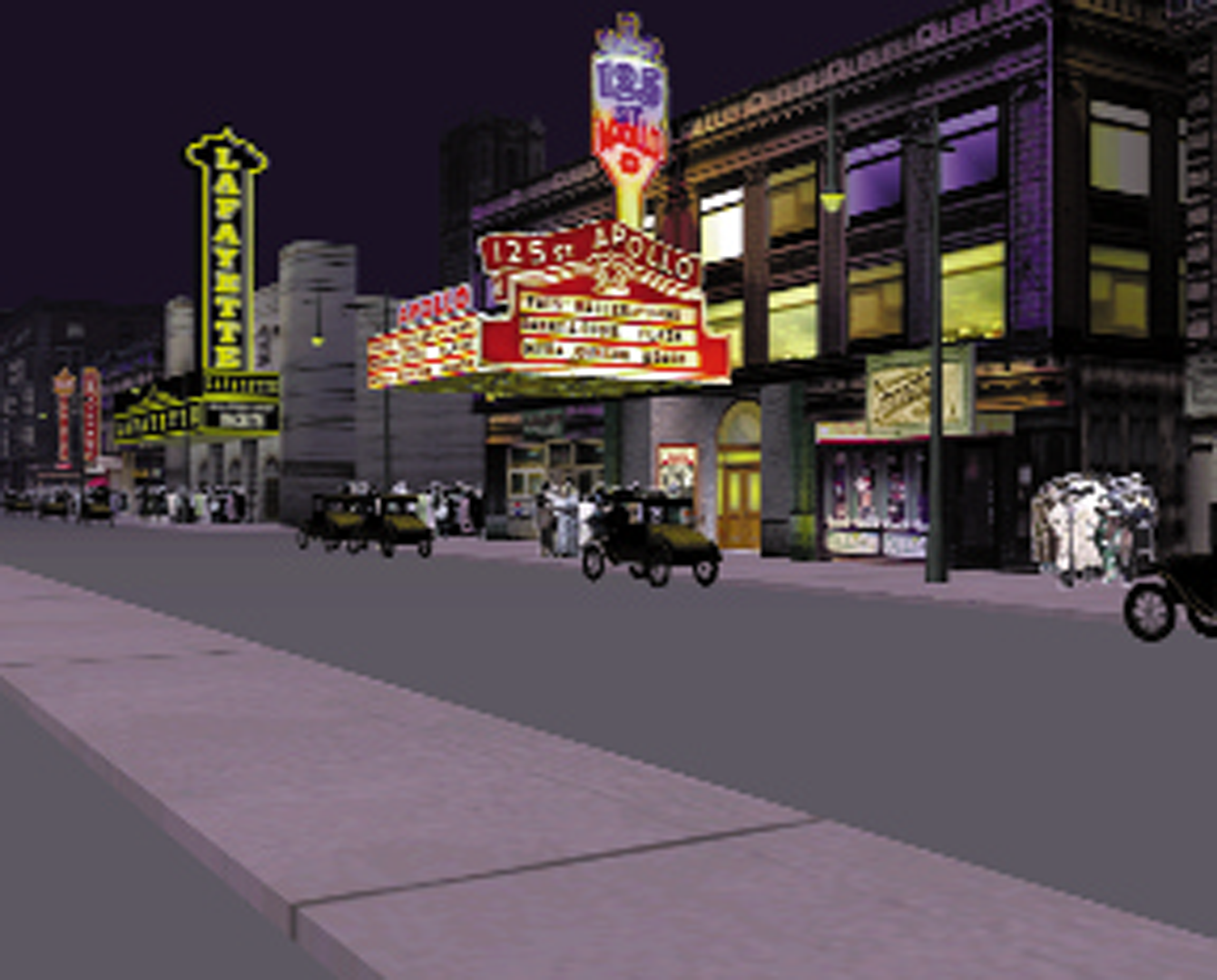“Virtual Harlem” by Carter
Conference:
Experience Type(s):
Title:
- Virtual Harlem
Program Title:
- Electronic Schoolhouse (Classroom, Playground)
Organizer(s)/Presenter(s):
Description:
The University of Missouri-Columbia’s Advanced Technology Center presents Virtual Harlem, an innovative use of virtual reality in an American literature setting. This virtual world allows students to visualize the setting and context of fictional texts in a computer-generated environment. Students are able to navigate streets, interact with historical characters, and participate in the virtual world’s design. Approximately 10 square blocks of 1920s Harlem (the Harlem Renaissance) have been reconstructed to give students an unprecedented view of the cultural wealth and history of this area. It took over six months to gather material, maps, photos, and films to begin “building” Virtual Harlem. The environment was constructed to specifications detailing the exact lengths and widths of streets and placement of buildings. Currently, students are expanding this base and adding extra dimensions to the project.
According to Thomas Nagel (1974), research in cognitive science has demonstrated that experiential elements offered by various environments enhance acquisition of knowledge. Expanding environmental effects on learning, William Winn (1993) proposed that a different type of learning occurs in a virtual environment, called “constructivism,” (which was actually an expansion of earlier constructivist theory proposed in the early 1980s by R.M. Gagne et. al.), in which students actively engage in the learning process. Rather than passively receiving knowledge, students must navigate and make decisions based upon various options presented to them. This active decision-making gives students the feeling of not only participating in a real-world environment, but also turns learning into exploration. Because they feel a sense of agency, students are more likely to engage in learning. The cognitive research of Bartlett, Neisser, and others has shown that, because of the experiential effect of VR and the interaction that users have with other users and objects within the environment, meaning within a virtual environment is very closely tied to that gained from the real world.
When students read novels, they are experiencing, second-hand, the experiences of the author. Although this second-hand account of an author’s knowledge of a place or event may lead to a good understanding of what the author is trying to express, VR affords the student an opportunity to experience the same environment first-hand. Students may discover entirely new or additional meanings after “seeing” the scene themselves. In this way, VR becomes an intertextual engagement, allowing students to engage in a simulated environment, filled with music, photos, and dialogue. This intertextuality allows students to have a sense of engaging with the characters or author of a text rather than simply receiving information second hand. Students can then
compare their experiences to those of the author, shaping their own reading of the environment or text, as well as better understanding the basis for the author’s interpretations. VR promises not only to open the text to new possibilities, but also to revolutionize the notion of what it means to “read” or experience a text. Because of recent currents in literary criticism focusing on intertextuality, pastiche, and reader response, this aspect of VR should be vital to the future of literary criticism.
One of the primary reasons for using virtual reality in this course is to engage students on a technological and critical level. By entering a realistic rendition of the environment that inspired a story, a work of fiction can be better understood and more critically evaluated. Opening a novel spatially in this fashion helps students renegotiate their understanding of how fiction should be read. In Virtual Harlem’s virtual world of sights and sounds, period photos were used for the reconstruction, as well as narrative and music from the 1920s. Participating in the creation of this literary environment encourages students to become more engaged in the class as a whole. Quantitative and qualitative assessments support this claim.
We have developed an advisory committee comprised of scholars from various disciplines, such as history, sociology, art, music, and psychology, all of whom see a relationship between Virtual Harlem and units they teach within their areas of specialization. The cross-disciplinary incorporation of VR technology in the humanities encourages students to explore relationships among art, history, economics, music, literature, and other fields that are usually taught separately.





